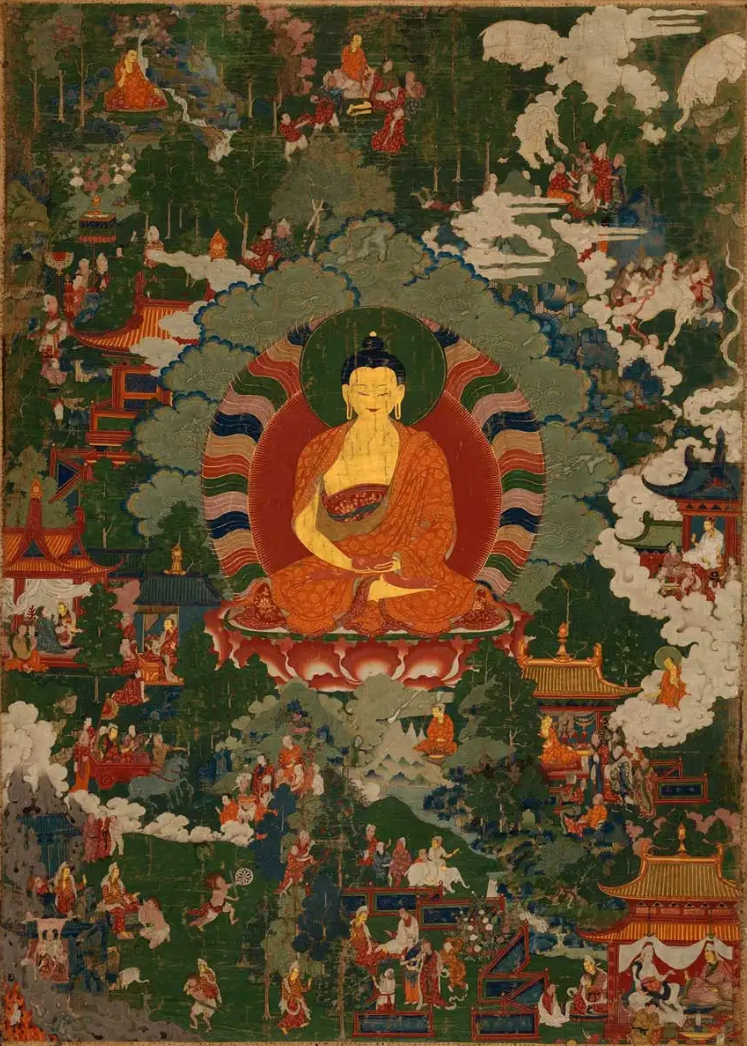What is Buddhism? A Path to End Suffering and Find Inner Peace
In the heart of bustling Singapore, a rich tapestry of beliefs and practices lies woven into the fabric of daily life. Buddhism, the largest religion in the nation, beckons those seeking solace, wisdom, and a path to end suffering. But what exactly is it, and how can it guide your journey?
Unveiling the Four Noble Truths:
Buddhism rests on the cornerstone of the Four Noble Truths, revealed by the Buddha himself. It begins with an honest acknowledgment: life is marked by suffering (dukkha). From fleeting aches to deeper anxieties, we all experience this inherent quality. Yet, suffering isn’t a dead end. The second truth points to its root cause: craving and clinging. We yearn for things, clinging to fleeting pleasures and fearing loss, which fuels the cycle of suffering.
Fortunately, the darkness doesn’t hold dominion. The third truth declares: suffering can be ended (nirvana). This state of liberation, free from desire and its clutches, offers a glimpse of true peace. And finally, the fourth truth illuminates the path: the Noble Eightfold Path. This practical guide, with its eight aspects, charts a course for cultivating ethical conduct, mindfulness, and wisdom.
Walking the Eightfold Path:
Imagine navigating a lush forest. The Eightfold Path acts as your compass, guiding you through:
- Right View: Understanding the true nature of reality, based on the Four Noble Truths.
- Right Intention: Cultivating wholesome motivation, rooted in non-harming and generosity.
- Right Speech: Upholding truthfulness and kindness in your communication.
- Right Action: Living ethically, refraining from harming yourself or others.
- Right Livelihood: Choosing a career that aligns with your ethical principles.
- Right Effort: Directing your mental energy towards positive thoughts and actions.
- Right Mindfulness: Cultivating awareness of your thoughts and emotions without judgment.
- Right Concentration: Steadying your mind through meditation to achieve deeper understanding.
Compassion at the Heart of Buddhist Practice:
As you tread this path, you wouldn’t be alone. Buddhism emphasizes metta, limitless compassion for all beings, including yourself. This is not simply pity or sentimentality, but a deep understanding of shared suffering and a genuine desire to alleviate it. Through acts of kindness and generosity, you not only ease the burdens of others but also cultivate inner peace yourself.
Image credit: Stories of Previous Lives of the Buddha, 18th century, Tibet, via Google Arts & Culture
什么是佛教?结束苦难,找到内心的平静之路
在喧嚣的新加坡,丰富多彩的信仰和习俗编织进日常生活的织锦中。作为这个国家最大的宗教,佛教吸引着那些寻求慰藉、智慧和结束苦难之路的人。但佛教到底是什么,它又如何引导你的人生旅程呢?
四圣谛的启示:
佛教建基于佛陀亲自揭示的四圣谛。它首先诚实地承认:生命注定有苦(Dukkha)。从短暂的痛苦到更深层的焦虑,我们都经历过这种本质。然而,苦并非死路一条。第二谛指出了苦的根源:贪欲和执着。我们渴望某些事物,执着于短暂的快乐,害怕失去,这加剧了苦难的循环。幸运的是,黑暗并非永恒统治。第三谛宣告:苦是可以终结的(涅槃)。这种解脱的境界,远离欲望及其束缚,给人一线希望,体会到真正的平静。最后,第四谛阐明了通向解脱的途径:八正道。这个切实可行的指南,包含八个方面,为你修习正确的品行、正念和智慧指明方向。
行走八正道:
想象你正在穿越一片郁郁葱葱的森林。八正道就是你的指南针,引导你前行:正见:根据四圣谛,了解现实的本质。
正思维:培养善良的动机,植根于不伤害和慷慨。
正语:在交流中坚持诚实和友善。
正业:过着符合道德的生活,不伤害自己或他人。
正命:选择一份与你的道德原则相符的职业。
正精进:将精神力量投注于积极的思想和行为。
正念:在不加评判的情况下,对自己的想法和情绪保持觉知。
正定:通过冥想,稳定你的心智,达到更深刻的理解。
佛教实践的核心是慈悲
在你踏上这条道路时,你并不孤单。佛教强调慈悲(Metta), 对一切有情众生,包括自己,怀有无限的同情心。这不仅仅是怜悯或感伤,而是对共同苦难的深刻理解,以及真诚地希望减轻它们。通过善行和慷慨,你不仅减轻了他人的负担,也为自己培养了内心的平静。

